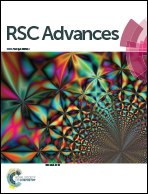Rapid determination of entropy for flexible molecules in condensed phase from the two-phase thermodynamic model
Abstract
The conformation of a flexible molecule varies mainly via changes in the angle of dihedral torsions. Here we show that the entropy and free energy associated with such torsional rotations can be efficiently and accurately determined from separating the torsional density of states (DoS) into a solid-like (harmonic vibration) and a gas-like (free rotation) component, and applying suitable quantum statistics to the corresponding components of the DoS. We examined the calculation of internal rotation entropy of ethane and methanol molecules in liquid and vapor phases over a wide range of temperatures. Furthermore, the torsional entropy of larger, flexible molecules, such as butane and hexane, are studied at the standard condition. It is found that the proposed two-phase thermodynamic (2PT) model can provide converged internal rotation entropy from a short, about 20 ps, trajectory of molecular dynamic simulation. The 2PT determined entropy is found to fall between those based on the theoretical models by Pitzer and Gwinn and by Truhlar. Our results suggest that this method can be a powerful method for understanding thermodynamic driving forces for conformation changes of flexible molecular structures.


 Please wait while we load your content...
Please wait while we load your content...